This post grew from days of watching my child wrestle with big feelings and from talking with other families who want real, doable help. I wrote it to share a clear path to unlock a child’s emotional intelligence. Small, steady moves add up to big power in how kids handle stress, friendships, and mistakes, boosting their emotional intelligence. You’ll find 17 secrets, and you won’t believe what secret number 7 is.
If you’re a parent, caregiver, or teacher who wants to support a child’s inner life, this one is for you. You care about kids feeling seen, handling ups and downs, and building real friendships. You want simple practices that fit into busy days and actually stick. This guide speaks to that need.
1. Encourage Emotional Expression

– Feeling heard matters. You can help your child share feelings by setting a safe, quiet space.
– Use simple words: sad, glad, mad, scared, bored.
– When mood flips, ask: “What are you feeling right now?” Help them name it.
– Try an emotion chart or a picture book with faces. Have them point to how they feel in a moment.
– Validate what you hear: “I can see you’re sad. It’s okay to feel that way.”
– Make this a daily ritual: ask about feelings at meals or before bed.
– Model expression: share your own feelings in a calm way.
1. Encourage Emotional Expression
Editor’s Choice

Feelings Chart for Kids – Coping Skills Emotions Chart Poster – Calm Dow…
 Amazon$16.95
Amazon$16.95
My Body Sends a Signal: Helping Kids Recognize Emotions and Express Feel…
 Amazon$10.89
Amazon$10.89
Lachilly Emotions Learning Flashcards, High Frequency Words, Beginning R…
 Amazon$6.99
Amazon$6.992. Model Emotional Intelligence

You teach your child how to handle feelings by how you live. Let them see you stay calm, listen first, and solve problems without shouting.
Here is what to do in plain terms:
– When stress hits, say the feeling out loud and name it, like “I feel worried.” Then describe the steps you take to cope.
– Explain your choices aloud. If you mess up, share what you learned and how you move on.
– Invite talk about your own emotions. Tell them it’s OK to feel sad, excited, or frustrated.
The result? Trust grows and your child learns real tools to manage feelings.
2. Model Emotional Intelligence
Editor’s Choice

Emotional Intelligence for Kids Workbook: Understanding Feelings, Self-R…
 Amazon$14.99
Amazon$14.99
Lachilly Emotions Learning Flashcards, High Frequency Words, Beginning R…
 Amazon$6.99
Amazon$6.99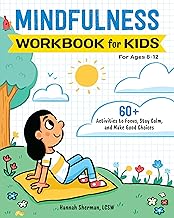
Mindfulness Workbook for Kids: 60+ Activities to Focus, Stay Calm, and M…
 Amazon$9.43
Amazon$9.433. Teach Problem-Solving Skills

– You want your child to grow in emotional intelligence.
– Guide problem solving, not solving it for them.
– Ask open-ended questions that spark thinking: What could you try next time?
– When a setback happens, pause with them and reflect: How did you feel, and what did you learn?
– Build practice with simple challenges like strategy games or block puzzles.
– Let them act, then review what worked and what to change.
– With consistent practice, calm thinking becomes natural and kids gain real confidence.
– This routine builds resilience and helps them handle big feelings.
– Start today with one short challenge and watch the change.
Emotional intelligence in children grows when they tackle challenges head-on. Encourage them to think, reflect, and adapt – it’s not just problem-solving; it’s building resilience for life!
3. Teach Problem-Solving Skills
Editor’s Choice

Plunder – Family Board Games – Board Games for Adults and Kids – Strateg…
 Amazon$49.99
Amazon$49.99
aotipol Building Blocks for Kids Toddlers Including a Baseplate, 101-pie…
 Amazon$25.99
Amazon$25.99
Educational Insights Kanoodle 3D Brain Teaser Puzzle Game, Featuring 200…
 Amazon$10.97
Amazon$10.974. Encourage Empathy

Empathy helps your child read others and build strong friendships. Start with stories. Ask, ‘How does this character feel?’ Describe scenes with details you both notice.
Then try role play that boosts emotional intelligence. Act out a park quarrel or sharing a snack. Let your child pick the role and name the feelings. When a misstep happens, ask, ‘Who was affected and how?’ Help them say sorry and fix it. Encourage small acts of kindness daily. A simple gesture like sharing a toy or helping a neighbor teaches big lessons. Celebrate these moments to grow a caring, connected child.
Empathy isn’t just a feeling; it’s a skill! By nurturing empathy in your child, you’re helping them build friendships and understand the world around them. A little practice goes a long way!
4. Encourage Empathy
Editor’s Choice

Empathy Is Your Superpower: A Book About Understanding the Feelings of O…
 Amazon$5.94
Amazon$5.94
Toddler Dress Up Clothes, Kids Role Play Costumes 4 In 1 Set-Police Doct…
 Amazon$31.99
Amazon$31.99
Open The Joy Kindness Cards for Kids – 56 Secret Missions for Little Sec…
 Amazon$11.95
Amazon$11.955. Use Feelings Words
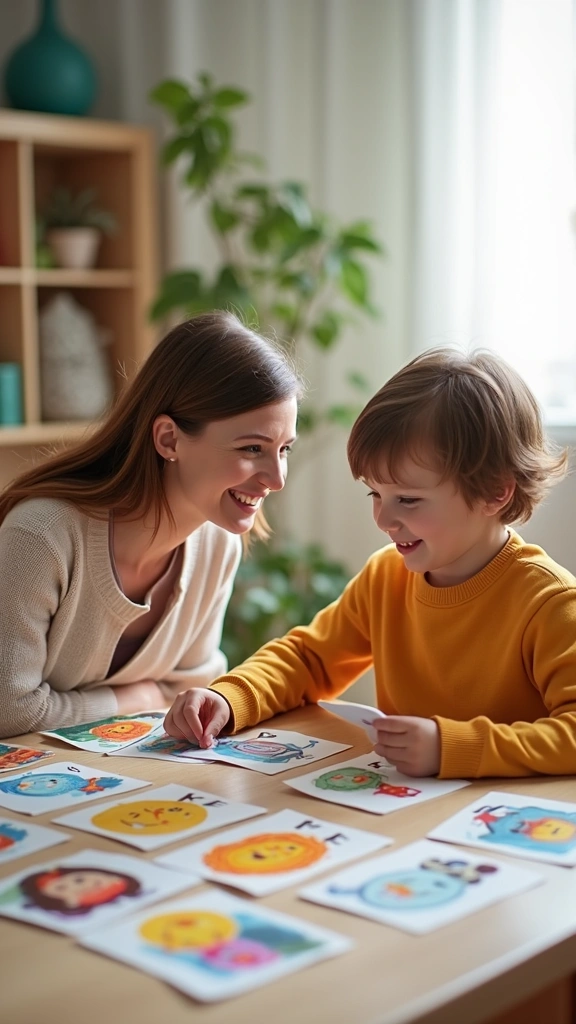
You want your child to name emotions clearly. Start by expanding their word bank beyond happy and sad. Introduce words like ecstatic, frustrated, disappointed. This helps them speak clearly and read others’ feelings. Practice daily Use everyday chats to drop in new terms. After a big event, ask, “How did that feel?” and name a few options. Make it fun
– Feelings Charades links faces with words
– Flashcards show a word and its meaning
Keep it light, repeat often, and celebrate quick wins. With steady practice, they’ll describe their feelings with ease. Keep practicing and your child will name feelings with confidence.
5. Use Feelings Words
Editor’s Choice

Lachilly Emotions Learning Flashcards, High Frequency Words, Beginning R…
 Amazon$6.99
Amazon$6.99
Open The Joy – Emotions Charades Card Game for Kids, Family Fun Educatio…
 Amazon$12.99
Amazon$12.99
6. Teach Mindfulness Techniques

– Mindful basics for kids You want them to handle big feelings. Start simple and clear.
– Breathing Inhale for four, exhale for four. A steady count steadies the mind.
– Body scan Guide them to notice toes, legs, belly, and shoulders. Name a feeling at each spot.
– Imagery Have them picture a calm place. Hear the sounds, feel the air, relax.
– Move with ease Try easy stretches or kid-friendly yoga. Keep it playful and brief.
– Daily routine Do a short session after meals or before bed. Small sessions add up.
6. Teach Mindfulness Techniques
Editor’s Choice

Mindful Kids: 50 Mindfulness Activities for Kindness , Focus and Calm
 Amazon$16.73
Amazon$16.73
Gaiam Kids Yoga Mat Exercise Mat, Yoga for Kids with Fun Prints – Playti…
 Amazon$16.99
Amazon$16.99
Sunny Days Entertainment Expandable Ball – Breathing Toy Sphere for Kids…
 Amazon$10.99
Amazon$10.997. Support Play-Based Learning
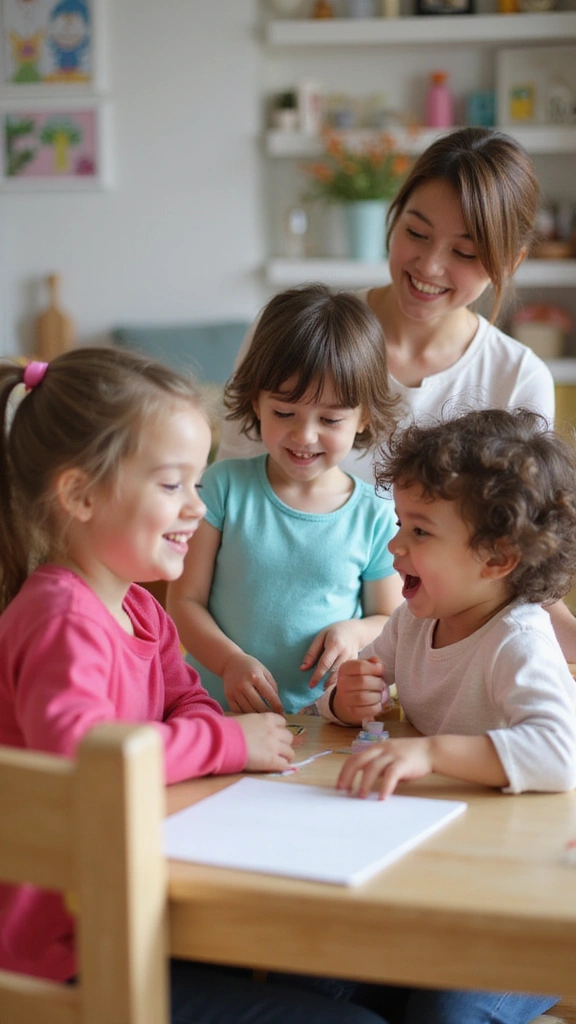
Why play-based learning helps emotional growth
You want your child to read feelings and build emotional intelligence. Play builds these skills in a natural, fun way.
Simple ways to use play at home
– Board games teach turn-taking and teamwork.
– Dramatic play stations let kids act out stories and empathy.
– Short playdates teach sharing and calming conflicts.
Guiding tips during play
Be nearby, not controlling. Name feelings aloud and model talking. After play, ask what they learned and how to apply it.
Why this matters
Rhythm of play builds a base for emotional skills and social life. Try 15 minutes a day.
7. Support Play-Based Learning
Editor’s Choice

Hasbro Gaming Candy Land Kingdom of Sweet Adventures Board Game for Kids…
 Amazon$9.99
Amazon$9.99
Educational Insights Dishes Set: Pretend Play Kitchen, Set of 25, Ages 3+
 Amazon$25.39
Amazon$25.39
8. Foster Independence

You want your child to grow into someone who can handle life’s twists. Independence is the path there. Start with small, real choices.
– Let them pick outfits or help plan meals for the week. They’ll feel capable and learn to read their feelings as they decide.
– Assign age-appropriate tasks. A simple chore or packing a bag builds responsibility and confidence.
– When challenges come, guide them to solve the problem. Ask questions, offer ideas, then step back.
– Celebrate effort, not just success. Talk about what they learned after a setback.
– Check in briefly on what to do next time.
8. Foster Independence
Editor’s Choice

Melissa & Doug Magnetic Wooden Responsibility Chart Toddler Routine, Kid…
 Amazon$19.59
Amazon$19.59
Set of 2 Food Chart Magnet 8.5×11 Magnetic Fridge Chart -Weekly Meal Pla…
 Amazon$14.99
Amazon$14.99
52 Essential Emotional Intelligence Training – Relationship Skills Card …
 Amazon$24.99
Amazon$24.999. Discuss Consequences

You want your child to feel how choices shape the day. Here is a simple way to build emotional intelligence.
– Ask, How did that affect your friend? What might happen next? These prompts stay short and clear.
– Tie actions to outcomes: Explain natural consequences. If you forget to share, you lose a turn.
– Encourage accountability: Talk about what to do differently next time. Next time, share before you grab.
– Practice in daily moments like meals and play to show how choice leads to impact.
End with a calm recap: This helps your child see their impact and grow empathy together.
Every choice shapes our child’s world. By discussing consequences, we empower them to connect actions to outcomes, building a strong foundation for emotional intelligence in children.
9. Discuss Consequences
Editor’s Choice

MEROCO Feelings Emotions Cards for Kids Therapy, Realistic Picture Cards…
 Amazon$9.99
Amazon$9.99
My Body Sends a Signal: Helping Kids Recognize Emotions and Express Feel…
 Amazon$10.89
Amazon$10.89
Emotional Rollercoaster | Anger Management Board Game For Kids & Familie…
 Amazon$39.95
Amazon$39.9510. Create a Supportive Environment

You want a home that helps your child name and calm emotions. A dedicated space gives you steady chances to help them practice feelings safely.
– Feelings corner You set up a cozy nook with soft light, a small chair, and cards that help your child name feelings.
– Positive reinforcement Celebrate progress after tough moments and praise their effort, not just results.
– Open conversations Ask simple questions, listen closely, and share your feelings to model honesty.
– Consistent routines You keep regular times and a predictable space so they know where to turn.
A warm, welcoming setup grows trust and steady emotional growth over time.
10. Create a Supportive Environment
Editor’s Choice

Kids Chairs for Toddler, 2-in-1 Toddler Soft Sherpa Couch Fold Out, Conv…
 Amazon$39.99
Amazon$39.99
Feelings in a Flash – Emotional Intelligence Flashcard Game – Toddlers &…
 Amazon$16.99
Amazon$16.99
Night Light for Kids,16 Colors Cat Lamp Cute Lamp,Dimmable Baby Night Li…
 Amazon$16.99
Amazon$16.9911. Share Stories About Emotions
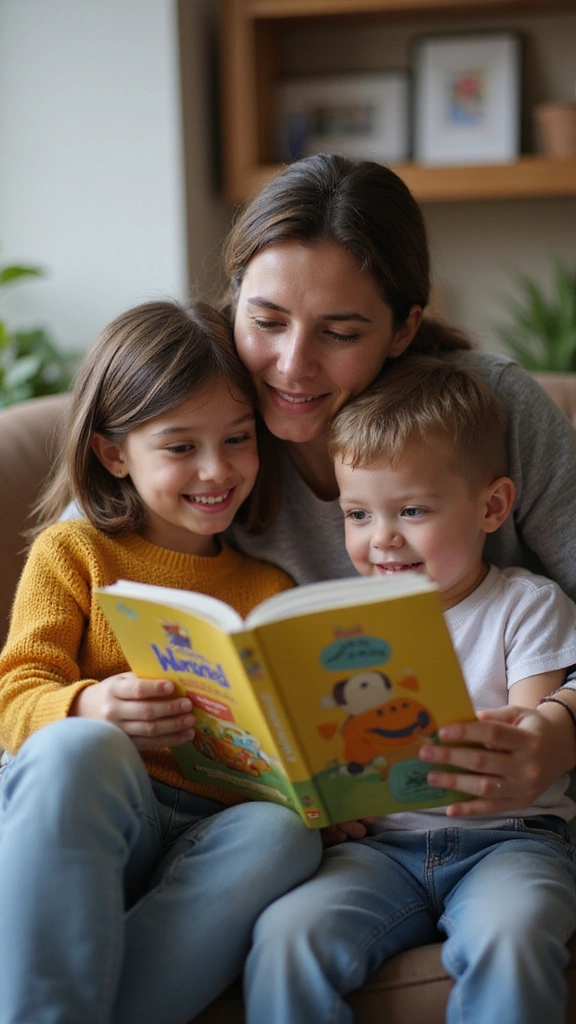
– Start with short picture books that show feelings. Look for scenes with happy, sad, or worried faces.
– Pause and name what you see. Say, “This character feels surprised.” Then ask, “What would you do next?”
– Let your child reflect. Have them describe what they would change or try differently.
– Share a quick memory from your life. Explain how you felt and how you chose to cope.
– Turn stories into new chats. After one page, make two or three quick questions to expand their emotional vocabulary.
– Make storytelling a routine. A library of feelings helps kids react calmly in real life.
11. Share Stories About Emotions
Editor’s Choice


Lachilly Emotions Learning Flashcards, High Frequency Words, Beginning R…
 Amazon$6.99
Amazon$6.99
Educational Insights Storytelling Dominoes – Creative Story Prompt Toys …
 Amazon$16.39
Amazon$16.3912. Celebrate Emotional Growth
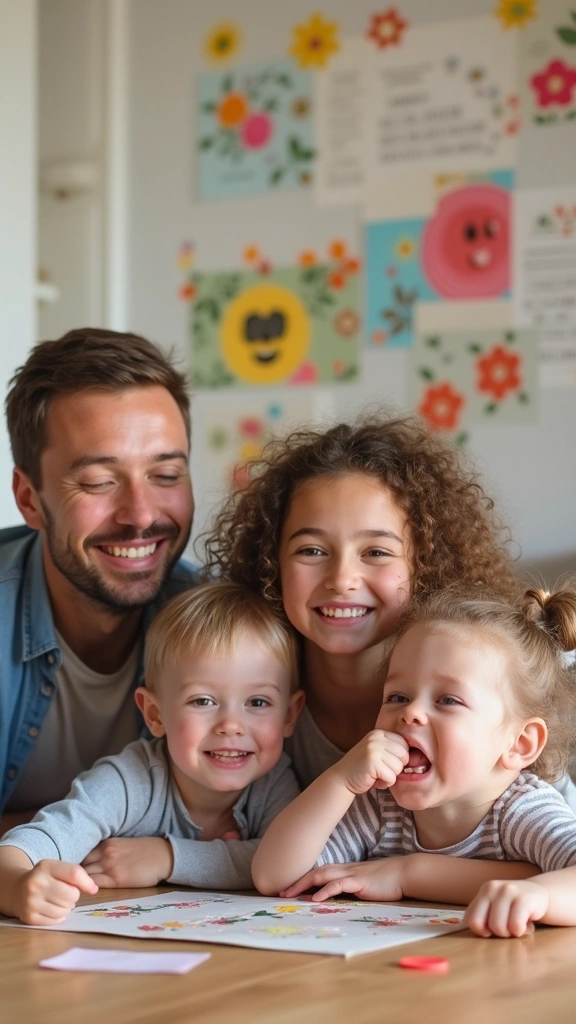
Here is why celebrating emotional growth matters. When your child stays calm in a tough moment or shows care for others, name it and praise it. You reinforce the skill and the value of empathy.
Try a simple feelings journal you do together. They draw a face daily or write one line about how they felt and why. Review it at a calm time. Note milestones like handling anger better or choosing kind words.
Regular recognition builds confidence. Make it fun with stickers or a small family reward for skills. Next steps: keep it short, be specific, and grow together.
12. Celebrate Emotional Growth
Editor’s Choice

My Thoughts & Feelings Journal: Help Kids To Express Emotions, Practice …
 Amazon$8.99
Amazon$8.99
Eersida 800 Pieces Face Emotion Feelings Stickers for Kids 1.4 Inch Funn…
 Amazon$9.99
Amazon$9.99
EZdhuawuse Reward Bucks Charts for Kids – 633Pcs Back to School Gifts Go…
 Amazon$15.99
Amazon$15.9913. Incorporate Music and Art
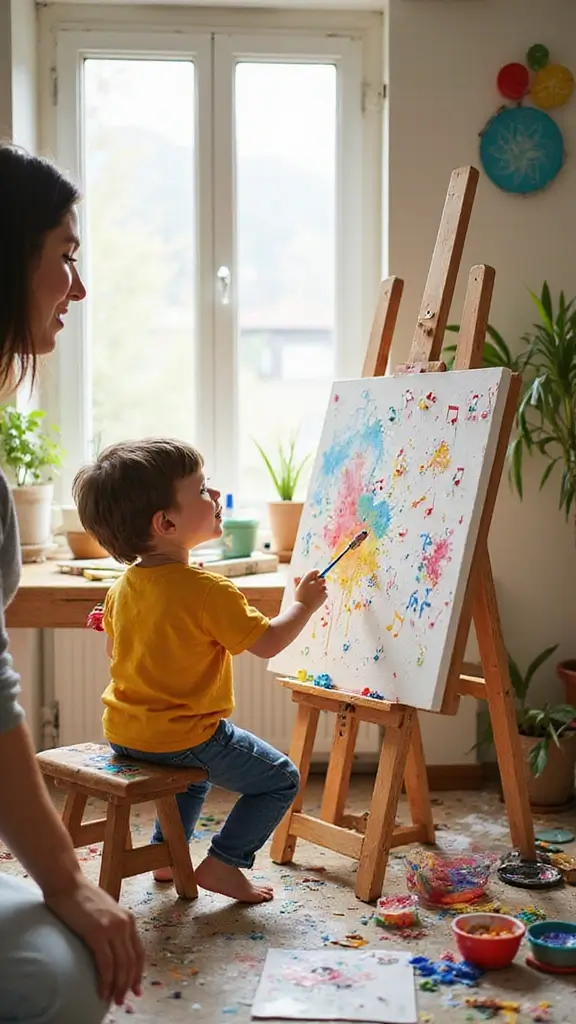
Boost emotional intelligence through music and art
You want your child to spot and name their feelings. Music and art make this feel natural and fun.
Set aside creative time. Try sessions; 15 to 30 minutes work well.
Provide simple supplies and a calm space.
Encourage songs or drawings that show how they feel. For example, ask them to pick a color that matches a mood and explain why.
Create a small “feelings playlist” together. Pick tunes that fit different feelings and talk about lyrics.
After creating, ask what stood out. This helps them talk about emotions clearly.
Try weekly.
13. Incorporate Music and Art
Editor’s Choice

DLUCKY 208 PCS Art Supplies, Drawing Art Kit for Kids Adults Art Set wit…
 Amazon$22.99
Amazon$22.99
50 Top Kids Party Playlist – The Greatest Ever Childrens Party Hits
 AmazonCheck Price
AmazonCheck Price
MEROCO Feelings Emotions Cards for Kids Therapy, Realistic Picture Cards…
 Amazon$9.99
Amazon$9.99
14. Encourage Social Engagement
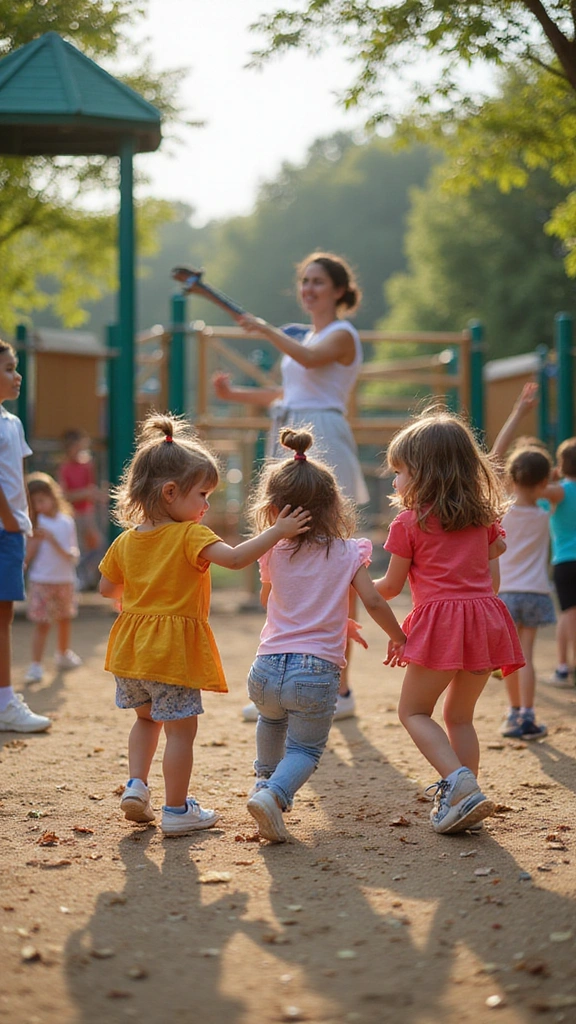
If you want your child to grow in emotional intelligence, social time matters. Real talk with peers builds empathy.
Here is why: small playdates, family meals, give chances to read faces and hear voices.
– Plan regular chances to mingle: you can arrange park play, clubs, or a family game night.
– After each outing, ask your child how they felt and how others might feel.
– Teach basics: sharing, taking turns, calm talking, and fixing small disagreements.
– Practice at home with role-plays: greeting a new friend, asking to join a game, offering a toy.
Next steps: start this week and note small wins.
14. Encourage Social Engagement
Editor’s Choice

Emotional Intelligence Card Deck – Master Your Emotions with 156 Emotion…
 Amazon$44.99
Amazon$44.99
Do You Really Know Your Family? A Fun Family Game Filled with Conversati…
 AmazonEUR 16.89
AmazonEUR 16.8915. Offer Positive Reinforcement

You want your child to grow in empathy and self-control. Positive reinforcement makes emotional wins feel real. Here is why it works: praise shows that their effort matters.
– Name the moment briefly: You listened and shared.
– Be specific with praise: Point to the trait, like empathy or patience.
– Use a simple rewards system: Stickers or points reinforce the habit.
– Tie it to real life: Explain how the trait helps friends and family.
– Keep it balanced: Celebrate progress and guide for next steps.
– Plan the next step: Ask, “Which skill will we practice this week?”
Positive reinforcement isn’t just about praise—it’s about acknowledging the little moments. Celebrate empathy and patience, and watch your child’s emotional intelligence soar!
15. Offer Positive Reinforcement
Editor’s Choice

Utron 80 Pack Reward Chart for Kids, Incentive Chart Behavior Chart for …
 Amazon$7.99
Amazon$7.99
MEROCO Feelings Emotions Cards for Kids Therapy, Realistic Picture Cards…
 Amazon$9.99
Amazon$9.99
My Body Sends a Signal: Helping Kids Recognize Emotions and Express Feel…
 Amazon$10.89
Amazon$10.8916. Set Realistic Expectations
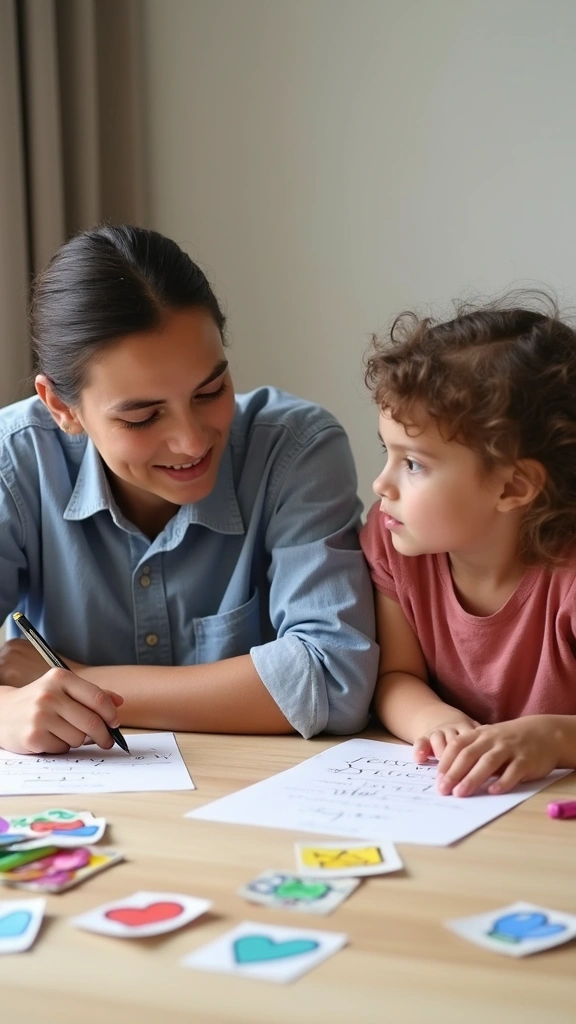
Is your child tangled in big feelings and unsure how to handle them? You can guide them with clear, small steps. Emotional growth happens one step at a time. Give them space to learn at their own pace.
– One new feeling a week: Pick a feeling like calm, anger, or curiosity. Name it aloud. Notice where it sits in the body.
– Reassure and normalize: It is normal to struggle. It is okay to ask for help.
– Celebrate small wins: A nod marks progress. A sticker or quick high five helps them see a win.
– Keep a simple routine: Set a regular weekly time to talk about feelings.
16. Set Realistic Expectations
Editor’s Choice

Lachilly Emotions Learning Flashcards, High Frequency Words, Beginning R…
 Amazon$6.99
Amazon$6.99
Reward Chart for Kids – Unicorn Magnetic Kids Behavior Chart, Pad with 2…
 Amazon$12.99
Amazon$12.99
My Feelings Journal & Worry Book: Emotions Journal Log Book For Kids & T…
 Amazon$8.99
Amazon$8.99
17. Create Family Traditions

– You want real closeness in your family. Start a simple weekly ritual, like a game night or family dinner.
– During the gathering, invite each person to share a feeling from the week. Use a small object to take turns and listen without judging.
– Include a quick story station. A short family tale at meals builds a shared history and makes emotions easier to talk about.
– Try practical prompts: ask, “What made you happy or worried this week?” keep snacks ready and let kids help plan.
– If a night slips by, do a quick check-in another day. Small traditions beat plans that never happen.
17. Create Family Traditions
Editor’s Choice

Sorry! Kids Board Game, Family Board Games for Kids and Adults, 2 to 4 P…
 Amazon$8.99
Amazon$8.99
MEROCO Feelings Emotions Cards for Kids Therapy, Realistic Picture Cards…
 Amazon$9.99
Amazon$9.99
Recipe Book To Write In Your Own Recipes with 6 Custom Dividers – Blank …
 Amazon$24.99
Amazon$24.99Conclusion

By incorporating these 17 secrets into your parenting routine, you’re laying the groundwork for your child’s emotional intelligence, which is vital for their personal and social development.
Each small step you take can lead to significant growth, helping them to understand and manage their emotions effectively. Remember, it’s a journey, and your support will make all the difference. Let’s nurture our children into emotionally intelligent individuals ready to face the world!
Note: We aim to provide accurate product links, but some may occasionally expire or become unavailable. If this happens, please search directly on Amazon for the product or a suitable alternative.
This post contains Amazon affiliate links, meaning I may earn a small commission if you purchase through my links, at no extra cost to you.
Frequently Asked Questions
What Is Emotional Intelligence in Children and Why Is It Important?
Emotional intelligence in children refers to their ability to recognize, understand, and manage their own emotions, as well as empathize with others. It’s essential because it lays the groundwork for effective communication, strong relationships, and overall mental well-being. By boosting your child’s emotional intelligence, you’re setting them up for success in both their personal and social lives.
How Can I Encourage My Child to Express Their Emotions?
To encourage your child to express their emotions, create a safe and quiet space for them to share how they feel. Use simple words like sad, happy, or mad to help them articulate their feelings. You can also ask open-ended questions such as, ‘What are you feeling right now?’ This not only validates their emotions but also teaches them that expressing feelings is a normal and healthy part of life.
What Are Some Fun Activities to Boost My Child’s Emotional Intelligence?
Engaging in playful activities can be a fantastic way to boost your child’s emotional intelligence! Try storytelling where you discuss how characters feel, or role-playing scenarios to explore empathy. Incorporating music and art can also help your child express themselves creatively. Remember, learning through play makes emotional growth enjoyable and effective!
How Can I Model Emotional Intelligence for My Child?
Modeling emotional intelligence is all about demonstrating healthy emotional behaviors. Stay calm during challenging situations, listen to your child, and solve problems without shouting. Share your feelings openly, and discuss how you handle emotions. Your child learns best by observing you, so embodying these skills is crucial in guiding them on their emotional journey.
What Are Some Signs That My Child Is Developing Their Emotional Intelligence?
You might notice several signs that your child is developing their emotional intelligence. They may become more aware of their feelings and start to articulate them better. You might see them show empathy towards others, such as comforting a friend who is upset. Additionally, if they can manage their emotions during challenging situations, it indicates growth in their emotional intelligence!
